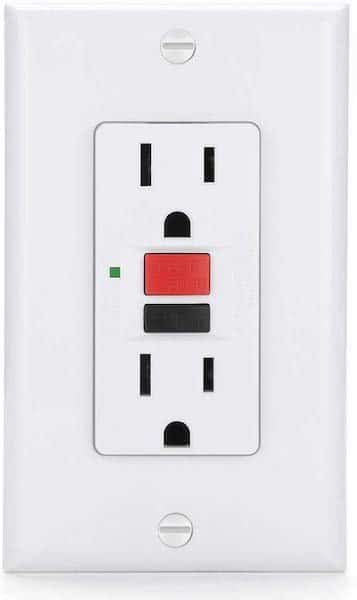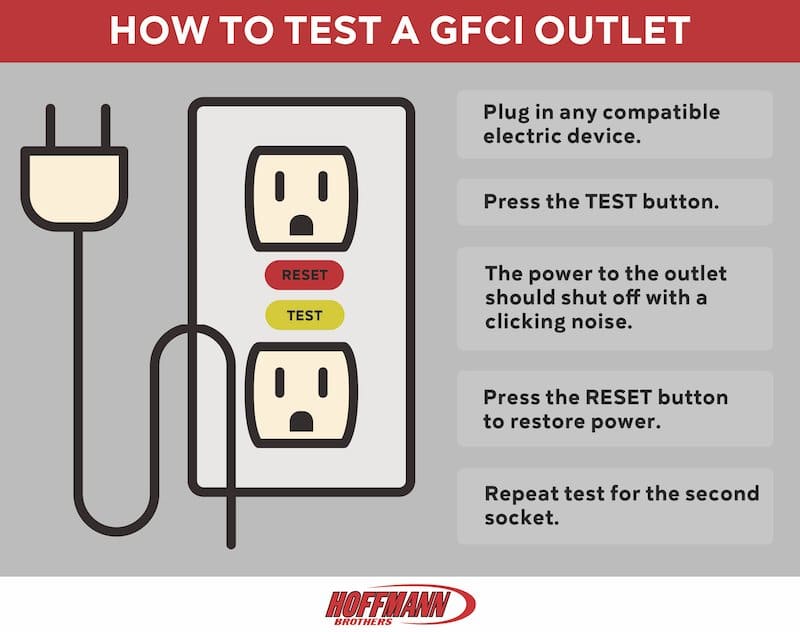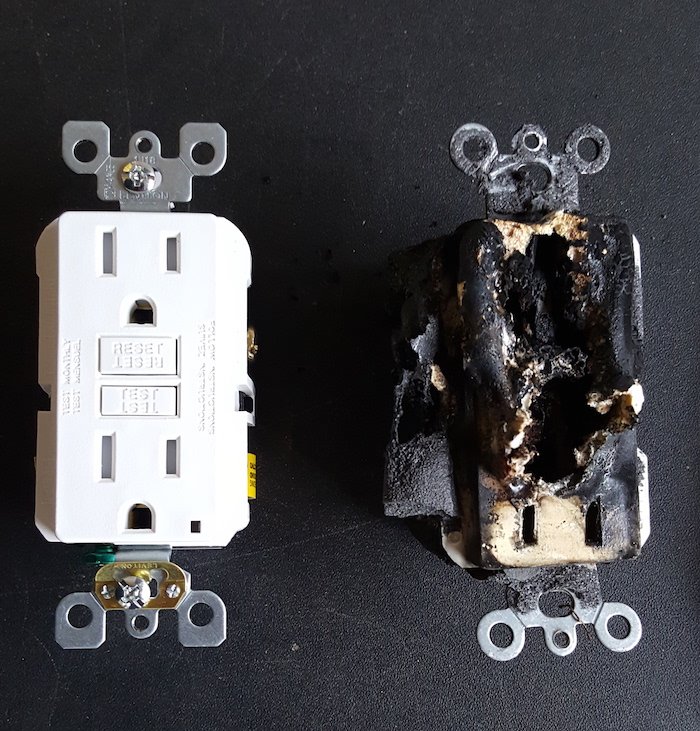Whether you are buying, selling, building, or renovating your home, it is important to ensure your home electrical is safe and up-to-date. That means you are likely going through inspections, and hearing the term “GFCI outlet;” but what does GFCI stand for? What is a GFCI outlet? How does a GFCI work, and why is it important?

You know these electrical outlets and have seen them, even if you weren’t familiar with their proper name. Anyone who has ever plugged in a hairdryer in the bathroom and had to press the “Test” and “Reset” buttons integrated into the outlet has used them.
What Is A GFCI Outlet?
Ground-Fault Circuit Interrupter (GFCI) outlets were created to protect people by reducing and preventing electric shocks and electrocution. According to The Electrical Safety Foundation International (ESFI), 47% of all current electrocutions could be prevented with proper GFCI outlets. Ground faults occur when electrical currents take an unintended path (e.g. through water or a person) and cause a shock or electrocution.
GFCI outlets continuously monitor the electricity flow of the circuit. When there is an interruption (like that hairdryer you plugged in accidentally being dropped into the sink filled with water), the GFCI cuts the power to save you from serious injury or death.
GFCI vs. AFCI Outlets
You may also have heard about Arc Fault Circuit Interrupter (AFCI) outlets. These work similarly to GFCI systems in that they act as safeguards for your home and family. The differences between these two types of outlets are in the causes and the potential effects that they are trying to prevent. Arc faults are caused by damaged or deteriorated wires/cords and protect against fires.
Signs You Need to Upgrade to GFCI Outlets
With 50% of US homes were built before GFCI outlets even existed1, it’s quite possible your property is due for GFCI upgrades. GFCI outlets are designed to typically last between 15 and 25 years. Outlets can and do go bad due to age, type of outlet, faulty wiring or other circumstances. Therefore, it is important to make sure that not only do you have updated electrical wiring but also that all outlets in your home are up-to-date in order to further protect it.
If you see 2-prong outlets your home, take it as indications that
- you have older wiring
- this is not an opportunity for a DIY job. Give a licensed electrician a call to schedule an inspection and the upgrades you need.
On the other hand, your outlets have been updated to the current standard if you see 3-prong outlets. Still, even these could be upgraded to the GFCI plug to meet code in certain rooms. You should only consider doing upgrades yourself if you see the 3-prong outlets and have checked to make sure the outlet in question is at the end of a circuit. (Three wires indicate the end of a circuit. Five wires indicate the middle of a circuit.) Otherwise, call a licensed electrician.
How To Test a GFCI Outlet
The Consumer Product Safety Commission (CPSC) recommends the testing of each GFCI outlet after installation, “at least once a month, after a power failure and according to the manufacturer’s instructions.”2
Here’s how to perform an effective test on each of your GFCI outlets:

- Identify the outlet you’d like to test
- Plug in any electrical device appropriate for the outlet
- Press the test button
- The power to the outlet should shut off with a clicking noise
- Press the reset button to restore power
- On dual GFCI outlets, repeat the test for both top and bottom sockets
Upgrading: GFCI Outlet Installation
The above-listed indicators are great reasons for upgrading the GFCI outlet wiring and the GFCI receptacles in your home, but when and why else might this be important?
The National Electrical Code (NEC) requires, by law, that certain standards be met. Home inspections done while you are buying, selling, building, or renovating your home will flag these potential hazards and require you to address them to ensure the safety of the home and those living in it.

- Outdoor
- Bathroom
- Garage wall
- Kitchen (that serve the countertop)
- Wet bar
- Crawl space
- Unfinished basement
- Laundry/utility room
- Electrically heated floor
You can also find an extensive checklist from the U.S. Consumer Product Safety Commission (CPSC) here to help ensure your home electrical is safe for you and your family room-by-room.
Follow this checklist, flag the outlets you are concerned about, and schedule an inspection and any upgrades to the GFCI wiring and GFCI protected outlets you need today!



